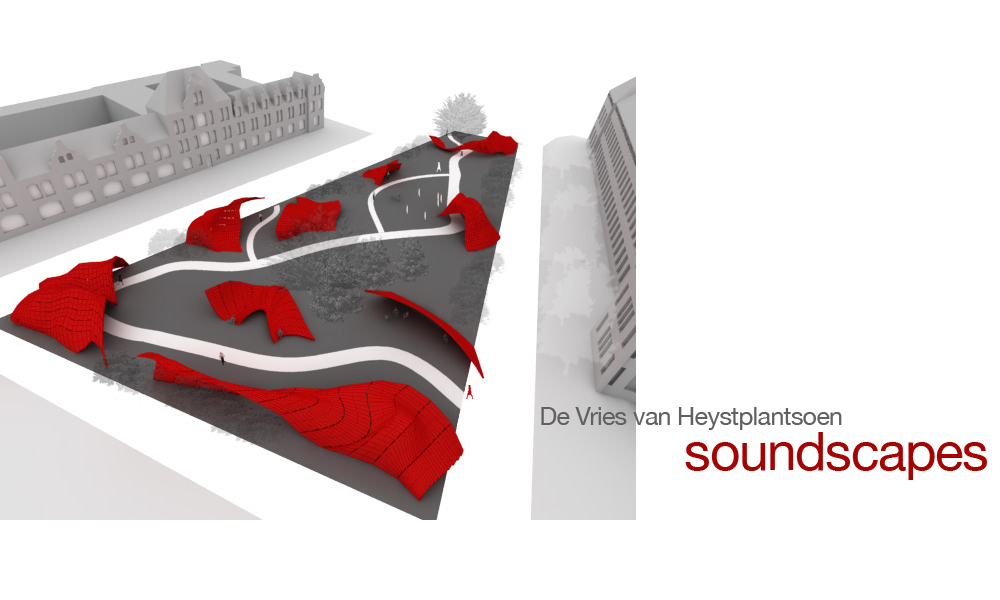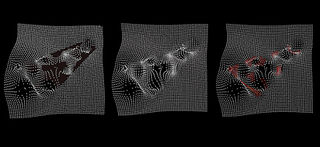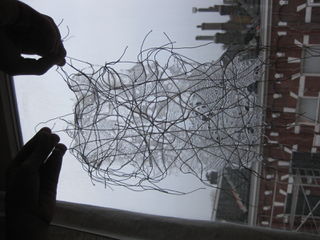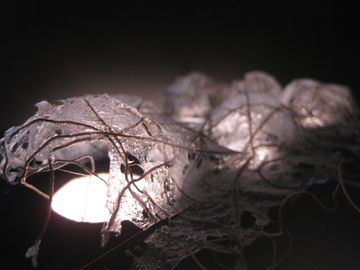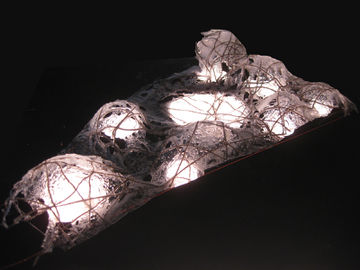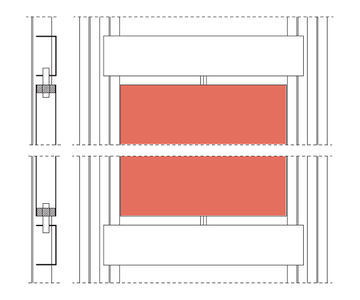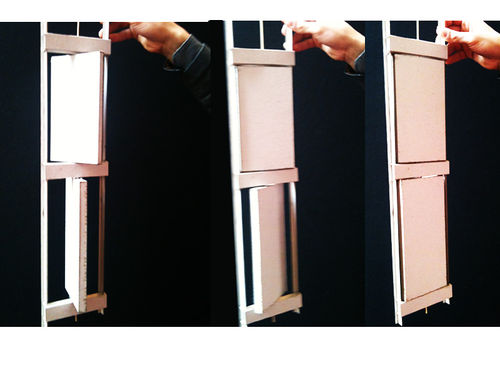project D:Home
(→research) |
(→research) |
||
| Line 120: | Line 120: | ||
In temporary spaces we want to exagerate the noise and in permanent spaces we want to reduce the noise. Edwin told us to make use of parabolic shapes in order to fully perceive the effect we want to create in every space. Parabolic shapes are able to gather te sound and to project the sound in a specific point. | In temporary spaces we want to exagerate the noise and in permanent spaces we want to reduce the noise. Edwin told us to make use of parabolic shapes in order to fully perceive the effect we want to create in every space. Parabolic shapes are able to gather te sound and to project the sound in a specific point. | ||
| − | |||
'''Dieter van Doren''' | '''Dieter van Doren''' | ||
| Line 126: | Line 125: | ||
Dieter Vandoren (1981, Belgium) is a media artist, developer and performer. His work balances on the edge of creative arts and scientific research and development. It combines audiovisual elements with electronic and software engineering in architectural settings, often real-time generative and interactive. | Dieter Vandoren (1981, Belgium) is a media artist, developer and performer. His work balances on the edge of creative arts and scientific research and development. It combines audiovisual elements with electronic and software engineering in architectural settings, often real-time generative and interactive. | ||
| + | '''Martin Tenpierik''' | ||
| + | |||
| + | Martin Tenpierik (b. 1979) studied at Delft University of Technology from which he graduated with honours in both Architecture and Building Technology in 2003. Because of his interest in research, he started working as a research fellow at the faculty of Architecture in Delft, resulting in the initiation in 2005 of a doctoral research project aimed at studying the applicability of vacuum insulation panels in building constructions. This study was successfully defended on 1 February 2010. He now works as an assistant professor in building physics. | ||
| + | |||
| + | Because of Martin's knowledge in building physics he was able to help out and enriched the project by answering our questions and providing acoustical information. | ||
| + | |||
| + | '''Henry den Bok''' | ||
| − | + | Henry den Bok helped out to give us the oppurtunity to experiment in the anechoic room. | |
| − | |||
Revision as of 12:33, 24 November 2011
Contents |
sounds of the urban park
"experience is the crystallization in a field of raw sensations - aromas, colours, textures, fears; which are held together by habit. Habit is a non-linguistic repetition of ideas in everyday life." - Manuel De Landa
The user's meaning of a park include fixed ideas such as green, open, tweeting, serenity, intimacy,companionship etc. These create a specific definition of a park. Every time the word park arises, these exact memories are recalled; but what is missing in the user's association for the De Vries van Heystplantsoen -an urban site- is the idea of a car,in both vision and sound. Because the noise of traffic is foreign to their basic meaning of park, they are disturbed by the actual reality.
The project's intention is to include the car and external sources into the user's combination of ideas of an urban park. Since the main contradiction is due to sound, the project will revert the negative perception of noise into a positive aspect of an urban park, furthermore add the idea of traffic into the habit of urban park.
areas
design process
Skin
A field of attractors and repellers is used to find the principle of forming the space. The former attracts the points from the grid to create surfaces, whereas the latter repells them to create open areas. The connections of the neighbouring points are curves to be used for the framework of the acoustic panels, the materials chosen have different acoustic qualities to be adapted to each one of the 8 areas.
A study of a glue model reveals the behaviour of a wrapping on the framework; by fitting panels, the framework allows the geometry to affect the sound conditions - as seen on the extreme condition chambers- and the panels to intensify the effect.
paneling Due to the variable conditions in sound direction (wind and plantation density), some of the skin panels rotate in order to adapt and optimize the effect for each area.
research
Psychoacoustics is the scientific study of sound perception. More specifically, it is the branch of science studying the psychological and physiological responses associated with sound.
experts
Edwin van der Heide
is an artist and researcher in the field of sound, space and interaction. He extends the terms composition and musical language into spatial, interactive and interdisciplinary directions. His work comprises installations, performances and environments. The audience is placed in the middle of the work and challenged to actively explore, interact and relate themselves to the artwork.
A few comments he gave are noted below:
Our plan exists out of 8 different spaces and every space another experience will be created. Edwin stressed the importance of having a sequence of contrasting spaces and it is not appropriate to come up with a smooth transition between different spaces. By coming up with a smooth transition the contrasts of different spaces will not be fully perceived by the visitors of the park.
In temporary spaces we want to exagerate the noise and in permanent spaces we want to reduce the noise. Edwin told us to make use of parabolic shapes in order to fully perceive the effect we want to create in every space. Parabolic shapes are able to gather te sound and to project the sound in a specific point.
Dieter van Doren
Dieter Vandoren (1981, Belgium) is a media artist, developer and performer. His work balances on the edge of creative arts and scientific research and development. It combines audiovisual elements with electronic and software engineering in architectural settings, often real-time generative and interactive.
Martin Tenpierik
Martin Tenpierik (b. 1979) studied at Delft University of Technology from which he graduated with honours in both Architecture and Building Technology in 2003. Because of his interest in research, he started working as a research fellow at the faculty of Architecture in Delft, resulting in the initiation in 2005 of a doctoral research project aimed at studying the applicability of vacuum insulation panels in building constructions. This study was successfully defended on 1 February 2010. He now works as an assistant professor in building physics.
Because of Martin's knowledge in building physics he was able to help out and enriched the project by answering our questions and providing acoustical information.
Henry den Bok
Henry den Bok helped out to give us the oppurtunity to experiment in the anechoic room.
In order to understand the immense potential of psychoacoustics and its effect for The De Vries van Heystplantsoen intervention, project D organized a series of experiments to get a sense of the most extreme spatial sound scenarios-an anechoic chamber(wave reflection free) and an echo room. By identifying their spatial and experiential characteristics, the project can apply sound/space/experience variation to the 8 points developed as atom 3.
conclusions
1. Sound clarity can be more effective in a space that absorbs sound. Partial absorption of external sound in comfortable / permanent areas can be applied to create collective spaces and areas for speech purposes.
2. Intimacy is supported by absorbing surfaces inside a space.
3. A room with constant reflection is relatively more disturbing than a room with constant absorption. Areas with with higher reflectivity can only be transitional.
4.Disturbing frequencies in normal conditions, are attenuated and more tolerable in a anechoic chamber.
5. Because of the lack of background noise in the anechoic chamber, its possible to perceive the blood pressure pounding in the ears, which is similar to an "after concert" ringing. Ambient noise does not translate directly into annoyance
6. In both extreme conditions it is difficult to estimate the features of a space. That is why these extreme situations will not be implemented in our project. orientation, flow, and transition are very important. In the anechoic chamber you are able to determine the angle, but not the distance of the source, regardless of light conditions.
7. Disturbance by noise is relative to immediate previous experience, this was seen after leaving the anechoic chamber, the initially ordinary level of sound in the transitional space that proceeded the chamber, was a welcomed relief after the experiment was completed, therfore . Similar spaces / experiences should not be adjacent.
8.Density plays a crucial role in the acoustics of a material, proving that thinner surfaces can be more effective in absorption than thicker and heavier ones.
9.Apart from the tilting and the quality of the materials, the absorbing corner played an important roll on the experiment; by allowing the evaluator to focus on the source clarity and not reflections from behind, the experience is much more interesting and noticeable.
